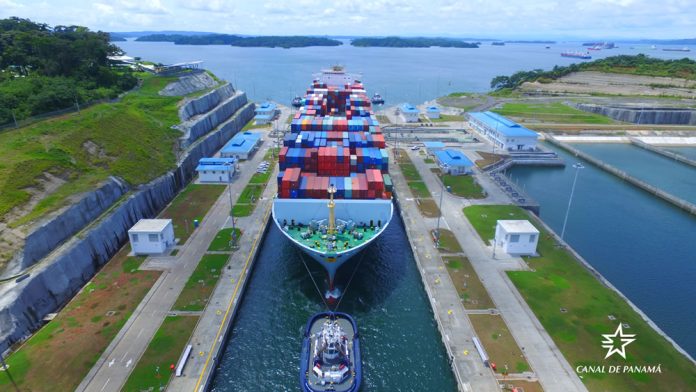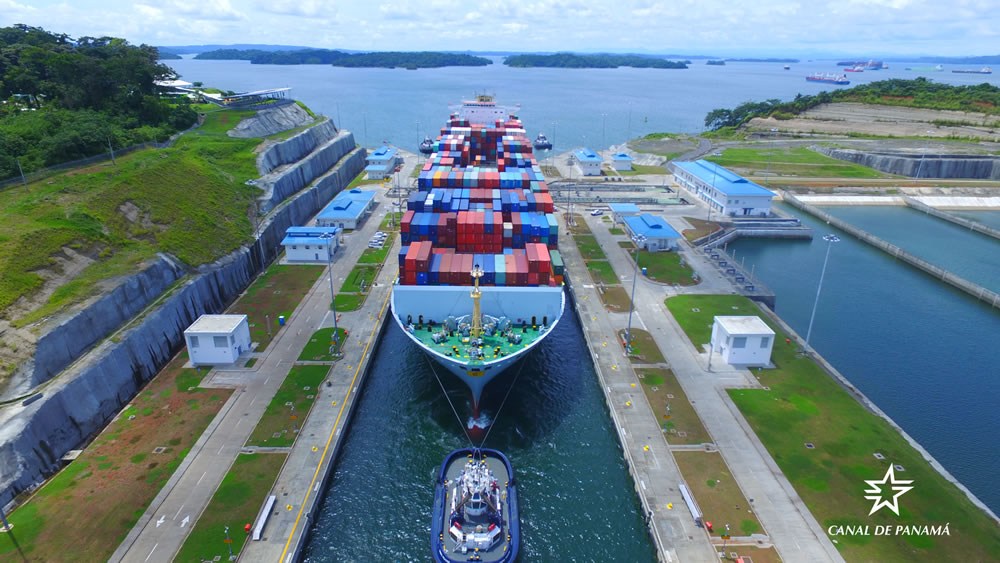
(www.MaritimeCyprus.com) The Panama Canal Authority (ACP) has announced the development of the Panama Canal Green Vessel Classification system, designed to include a Greenhouse Gas (GHG) Emissions Fee to ‘support investments to guarantee environmental performance standards and aid in making Canal operations carbon neutral’
As referenced in CAN(21)15, under this Classification System, ships will be classified in levels depending on their energy efficiency. The classification, and subsequent fee, will apply to all vessels over 125 feet (38.1 meters) length overall (LOA). In order to assess the energy efficiency of vessels, the ACP advise that the classification system will consider the following three factors:
- Energy Efficient Design Index (EEDI);
- Efficient operational measures such as the use of Bow Thrusters
- Use of Zero Carbon Biofuels or Carbon Neutral Fuels
ICS requested clarification about the method proposed to calculate the Greenhouse Gas fee, and expressed concern that a regional initiative in this form could undermine any global regulatory framework established by the IMO. ICS further requested information on the timeline for development of this scheme and information about the use of the funds raised by the scheme.
The ACP responded that the proposed classification system is designed to incentivise green shipping through the canal by establishing a price differential for energy efficient vessels, and that the revenue raised by the Greenhouse Gas Fee would be used to increase the sustainable operation of the canal, including investment into hybrid tugs, and into sustainable technology and operational systems.
While still in the early stages of development, Dr Vasquez advised that the ACP expected the classification system and GHG Fee to be in place by 1 October 2025 (the beginning of the Panama Canal’s fiscal period 2026). Dr Vasquez reiterated that the development of the proposed system would be conducted in consultation with industry.
ACP Long Term Pricing Strategy
The ACP had initially advised the Secretariat of the development of a long term pricing strategy in a communication shared under CAN(21)06, which outlined that the development of a long term pricing strategy would be conducted in consultation with industry during the second half of 2021. During the meeting, Dr Vasquez updated the Secretariat that the development of this strategy (designed to provide the required level of pricing predictability for the shipping industry) was in the final stages of construction.
He further advised that this pricing strategy will comprise three elements from which canal transit fees will be calculated:
- A minimum fixed rate will apply depending on the lock system used (Panamax or Neopanamax);
- A fixed fee will apply determined by vessel size (preferably calculated using the Panama Canal Universal Measurement System (PCUMS)); and
- A variable charge will apply, calculated depending on supply and demand conditions of the canal. It was noted that the use of this dynamic charge will require a transparent information platform on the booking system outlining the level of demand for transits at any given time.
It was advised that the combination of the above three elements will enable the calculation of transit fees until 2028, and that this system will form part of the increased investment required by the canal to meet the challenges of sustainable operation. It was reiterated by the ACP that the capital investment needed over the next 8 years in order to finance the sustainable operation of the canal was estimated to be in the region of $7 billion, which would need to be financed partially through the fee revenue stream.
Public Consultation and Implementation Timetable
The ACP Administrator advised that documents outlining the proposed structure for the long term pricing strategy would be published for public consultation in the coming days, with a deadline for comments of mid-January 2022.
Once the public consultation closes, comments on the structure of the strategy will be considered by the ACP and confirmed at a meeting of the ACP in March to implement the strategy. Once implemented, the strategy is designed to provide price calculations from the date of implementation until 2028, offering predictability of pricing required by industry.
ACP Water Conservation Strategy
Further to the information provided under cover of CAN(20)04; 08, the ACP advised that the most recent development in the Water Conservation Strategy has been to secure the U.S. Army Corps of Engineers (USACE) to provide technical assistance for the project to ensure operational sustainability, engineering services and overall analysis.
Dr Vasquez noted during the meeting that the USACE had been contracted to provide input into three main work streams to enhance water conservation at the Panama Canal:
- Initiatives to ensure water quality;
- Initiatives to develop new sources of water; and
- Projects to add reservoirs to the canal (specifically by segmenting the Gatun Lake to improve water storage strategies)
In response to a query from ICS on the timeline of implementation for these projects, the ACP advised that the USACE have been contracted to work with the canal until 2024 on this portfolio of projects, and that development of projects to enhance water quality and sourcing were expected to take place well before the contract end date. The more complex project to add reservoirs to the canal was expected to be undertaken once the water quality and sourcing projects had been achieved.
The Canal has held discussions with ship owners directly for transparency, as it evaluates these changes, and will work in partnership with customers to accelerate carbon neutrality.
This programme will align with the International Maritime Organization regulations that promote international plans for decarbonisation in the maritime sector.
Source: Panama Canal Authority














